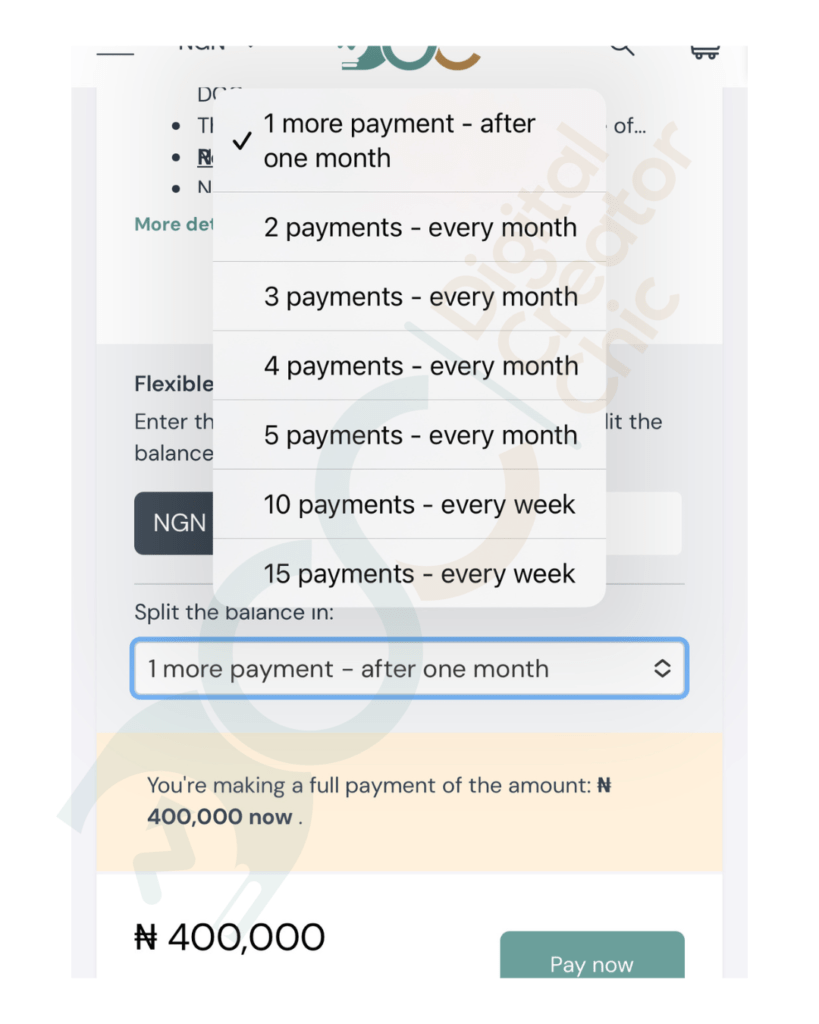“A satisfied customer is the best business strategy of all.” – Michael LeBoeuf
One of the biggest reasons potential buyers hesitate to make a purchase is affordability. Even when they see the value in what you’re offering, a high upfront cost can make them second-guess their decision. This is where payment plans become essential. They provide financial flexibility, making it easier for people to say yes.This article covers five effective payment plans that not only help close more sales but also build long-term customer relationships.
Why Payment Plans Matter
Before exploring different types of payment plans, let’s look at why they are so effective:
- Increase Sales: More people can afford your product or service.
- Reduce Cart Abandonment: A flexible payment structure eases financial concerns.
- Build Customer Trust: Offering options shows that you understand different financial situations.
- Create Recurring Revenue: Payment plans help generate steady, predictable income.
Now, let’s go through five payment plans that customers find hard to resist.
1. The Installment Plan – Breaking Payments into Smaller Parts
The installment plan allows customers to pay in smaller, manageable amounts over a fixed period rather than one large sum upfront.
How It Works
- Customers pay in equal parts over weeks or months.
- The total cost is split into 3, 6, or 12-month plans.
- Interest may be applied, depending on the terms.
For example, if you sell an online course for $1,500, you could offer a three-month installment plan of $500 per month, making it more budget-friendly.
Best for: High-ticket offers like coaching programs, courses, and premium products.
Call to Action: Want to get started without paying the full price upfront? Choose our installment plan.
For Instance, in my profitable funnel retreat, I utilized this payment plan

2. The Subscription Model – Small Monthly Payments for Ongoing Access
A subscription model allows customers to pay a recurring fee for continued access to a product or service.
How It Works
- Customers are charged a monthly or yearly fee.
- They gain ongoing access to the product or service.
- Works well for memberships, software, and exclusive content.
Streaming services like Netflix use this model, making premium content accessible at a lower monthly price rather than requiring a large one-time payment.
Best for: Software, content platforms, memberships, and community-based services.
Call to Action: Join today and get premium access for just $29 per month.
3. The Pay-As-You-Go Plan – Paying Based on Usage
This flexible model allows customers to pay only for what they use instead of committing to a fixed price.
How It Works
- Customers are billed based on their actual usage.
- No fixed fees—pricing varies.
- Encourages participation without financial risk.
For example, cloud services like Amazon AWS charge based on data usage instead of a flat rate, ensuring customers only pay for what they need.
Best for: Utility-based services, consulting, and digital tools.
Call to Action: No long-term commitments—pay only for what you use.
4. The Buy Now, Pay Later (BNPL) Plan – Immediate Access with Delayed Payments
Buy Now, Pay Later (BNPL) is a growing trend, especially in e-commerce. It lets customers receive a product immediately while delaying or splitting payments.
How It Works
- Customers receive the product or service upfront.
- Payment is deferred or split into future installments.
- No-interest options are common.
Companies like Klarna and Afterpay allow shoppers to buy products now and pay later in four interest-free installments, making it easier for people to commit.
Best for: E-commerce brands, digital products, and high-end services.
Call to Action: Get what you need today—pay later with no interest.
5. The Hybrid Plan – A Mix of Multiple Payment Options
A hybrid payment plan gives customers more control by allowing them to choose between different pricing structures.
How It Works
- Combines installment, subscription, or BNPL features.
- Customers select the plan that fits their budget.
- Works well for high-ticket programs and customized services.
For example, a business coach offering a six-month program for $2,000 might offer two payment options: 1) Pay in full and get a 10% discount, or 2) Split into four monthly payments of $500.
Best for: High-ticket offers, coaching programs, and premium services.
Call to Action: Choose a payment option that works best for you.
How to Choose the Right Payment Plan for Your Business
Selecting the best payment plan depends on your business model, the type of product or service you offer, and your audience’s financial flexibility. Here’s a quick breakdown:
| Payment Plan | Best For | Advantages |
| Installment Plan | High-ticket items, courses, coaching | More accessible pricing |
| Subscription | Digital products, memberships | Recurring revenue |
| Pay-As-You-Go | Services, consulting | No long-term commitment |
| Buy Now, Pay Later | E-commerce, digital products | Immediate access, increased sales |
| Hybrid | High-ticket offers, custom services | Ultimate flexibility |
Make It Easier for Customers to Say Yes
A well-structured payment plan can be the key to turning interested prospects into paying customers. By offering flexible, customer-friendly options, you remove financial barriers and build long-term loyalty.
If you need help setting up a payment strategy that works for your business, let’s talk. I can help you create a pricing structure that maximizes sales while making it easier for your customers to buy.
Book a call today to explore your option.



